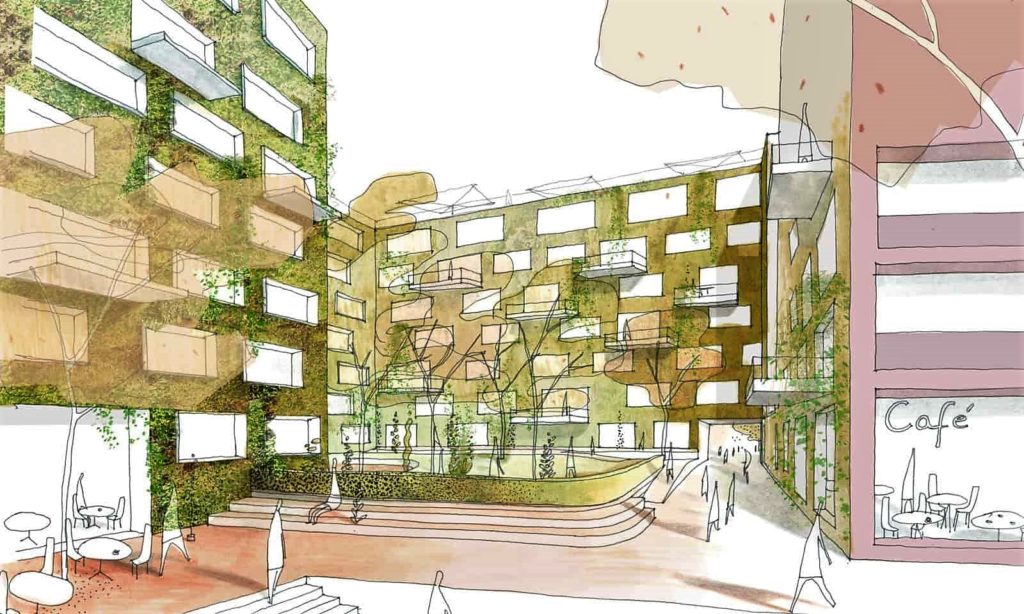The second project
Over the last days I reported about the bad air quality and an immobile solution to it. In the future, our and future generations will have to deal with further problems, one of which is the dwindling resources. The building industry has a sustainable answer to this problem, too. Once again, the city of Hamburg is the German pioneer and again the development comes from Aachen.
In Hamburg’s Hafencity, the construction of Germany’s first high-rise residential building based on the Cradle 2 Cradle (C2C) principle will begin next year. The Aachen-based company Landmarken AG will tackle this unique project on a 4,740 m² construction site on the northern bank of Baakenhafen. The 12-floor high-rise building named “Moringa” is scheduled for completion in 2023.
Moringa oleifera
The project is named after the tree Moringa oleifera, which is native to the Himalayas and is considered to be the most nutrient-rich plant on earth. Also known as the “Miracle Tree” or “Tree of Life”, Moringa oleifera is unique in the world. It grows up to 30 cm per month and almost all of its components can be useful for humans.
The C2C principle, which stands for a closed material cycle, is also oriented towards the sustainability of Moringa oleifera. Building projects developed according to this principle use only recycled and recyclable raw materials, regenerative energies and healthy resources. The well-being of the users and nature is the main focus. The building must not burden the land, on which it is built, more than if it were left untouched.
About the building
In its usage concept, this innovative project combines family-friendly living, a neighborly community and public benefits. 33 percent of the 170 apartments being built will be publicly funded. The aim is to create a living space for families, couples, young people and senior citizens of all income groups. There will even be a community app to improve the bond between the residents.
In addition to the high-rise building, the Moringa also has two other buildings grouped around an inner courtyard. There you will find a day-care centre for children, event rooms, fitness and lounge areas as well as gastronomic businesses. An underground car park will provide 30 parking spaces especially for car-sharing vehicles and over 200 bicycle parking spaces. The Moringa complex will have a mobility sharing concept with offers ranging from cargo bikes to e-cars.
Are you interested in C2C or the Hafencity?
The C2C principle developed in the late 1990s by the German chemist Michael Braungart and the US architect William McDonough is unfortunately still quite unknown. Many investors and developers have great respect for some of the challenges posed by this principle, because there are only a few certified products for implementation in technical building services such as heating, ventilation, water or power supply. The European Union is funding a research project on Buildings as Material Banks, which is aimed at the C2C principle. An overview of materials suitable for the C2C principle can be found on the website of the Cradle to Cradle Product Innovation Institute.
I have become a big fan of the sustainable principle and would be happy if more such buildings would be built soon. They can not only be sustainable but also beautiful!
A visit to Hamburg’s Hafencity is therefore also worthwhile, as the Moringa will keep company with other buildings there, that meet exceptionally high sustainability standards. These will include, for example, the high-tech smart building EDGE Hafencity, which focuses on a high level of digitalization, and the solar building of Enerparc-AG. With an area of 157 hectares, Hafencity is the biggest inner-city development project in Europe. Currently 4,600 people live there, in 20 years it is expected to be up to 15,000. On one of my future visits to Hamburg I will not miss a walk there!
